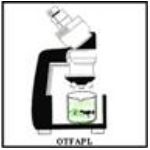AGLS 6502 Glossary of Digestive Terms
Unit 2 Tutorial - Glossary of Digestive Terms
Glossary of digestive terms used with livestock
ABOMASUM
This compartment is analogous to the stomach of the non-ruminant. It is the gastric glandular stomach. Digestive processes of this compartment are very similar to those of the simple gastric stomach of monogastrics e.g. that of man.
ANUS
This is a horizontal cleft bordered by two large labia, which facilitates the removal of waste from the intestines at the end of the large intestine.
CECUM AND COLON
These sac-like structures hold ingesta to facilitate the removal of water and electrolytes (minerals). The cecum of ruminants is not very well developed and plays a rather insignificant role in digestion. Avians have two blind sacs (ceca) where a limited amount of bacterial activity and subsequent absorption has been observed.
CLOACA
This is equivalent to the anus, and performs the same function.
CROP
This organ follows immediately on the oesophagus. It is covered with many glands which secrete a viscous mucus, which lubricates the passage of food and to softens it while it is in the crop.
DUODENAL LOOP
This structure is part of the small intestines and is responsible for mixing food with digestive juices.
FORAGES (ROUGHAGES)
These are derived from the green plant material produced by photosynthesis. They contain fibre which are eaten and digested by ruminants. Wilted plant materials such as hays would not therefore be green.
GALL BLADDER
The gallbladder is the storage site for bile. Several species of livestock and animals do not have gallbladders among them: horses, rats, gophers, deer, elk, moose, giraffes, camels, elephants, pigeons and doves.
GIZZARD
This follows the proventriculus. It is a hollow muscle, very powerful, and covered internally with a substance of horny consistency. It is an organ for grinding food, in the absence of digestive glands.
LARGE INTESTINES
In addition to being a passage-way for waste materials, it absorbs water from the mass that comes form the small intestines. It consists of the colon and caecum.
LIVER
The liver comprises of two lobes, and incorporates the gallbladder. Its primary role in digestion and absorption is the production of bile. Bile facilitates the solubilization and absorption of dietary fats, and also aids in the excretion of certain waste products.
MOUTH
This consists of the lips, teeth (which are absent in avian species) and tongue. This structure varies in form and function among the different species, but is part of the intake and grinding of food.
OESOPHAGUS
An elastic canal of the connecting the throat (pharynx) and mouth.
OMASUM
After time is spent in the rumen, the food is passed to the omasum. Here, the food is ground between leaf like projections that hang from the walls to the centre. These walls limit the particle sizes that can enter the abomasum. From this point, digestion proceeds into the abomasum.
PANCREAS
This is an accessory organ of digestion. It is a glandular structure involved in the production and secretion of fluids that are necessary for digestion within the small intestines.
PROVENTRICULUS
Also called the succenturiate ventricle or glandular stomach, it is situated at the immediate front of the gizzard and shaped like a short spindle. Its thick walls contain many glands which secrete gastric juice.
RECTUM
This is a short passage, which empties into the anus or cloaca (in avian species).
RETICULUM
This is a small extension of the rumen that also acts in concert with it. It is lined with a honeycomb-like structure, and its main function is in helping to form the “cud” for regurgitation and chewing. It also traps heavy material such as nails or wires that may enter the rumen.
RUMEN
This is the first of the fore-stomachs, and it is very roomy, and has strong muscular walls. It functions as a huge fermentation vat in which the fibre in the ruminants’ diet is fermented by microorganisms. The rumen also houses fermentation enzymes and bacteria which soften and breakdown the fibrous plant material. Fibre is broken down into volatile fatty acids and protein is broken sown into ammonia. These end products are then used to produce microbial protein, which is then digested in the abomasum (glandular stomach) and small intestines.
SALIVARY GLANDS
These glands which are found in the mouth, are responsible for the secretion of saliva. The function of the saliva is to moisten food and make it easier to swallow.
SMALL INTESTINES
The walls of the small intestines are lined with many projections called villi. It is through these villi that nutrients are absorbed into the blood and lymph stream, and carried to the various cells throughout the body. The main function of the small intestines is to absorb food nutrients. While digestion is taking place, the muscular walls contribute to the process by rhythmically contracting to mix the food with the digestive juices. This brings the nutrients in contact with the villi for more complete absorption to occur, and pushes the mass along the tract. The small intestines comprise of the duodenum, ileum and jejenum.
STOMACH
This organ is responsible for churning and mixing ingesta with acidic gastric juices and digestive enzymes.
